A black shot of espresso might not be everyone’s cup of tea, so adding a dash of milk can make a really big difference. A caffe latte is an alternative for those who want a caffeine boost but with less bitterness. A delicious mix of coffee and milk, this Italian drink has gained more popularity in the last few decades. The development of latte art and the hype around it on social media caught the eye and taste of many coffee lovers.
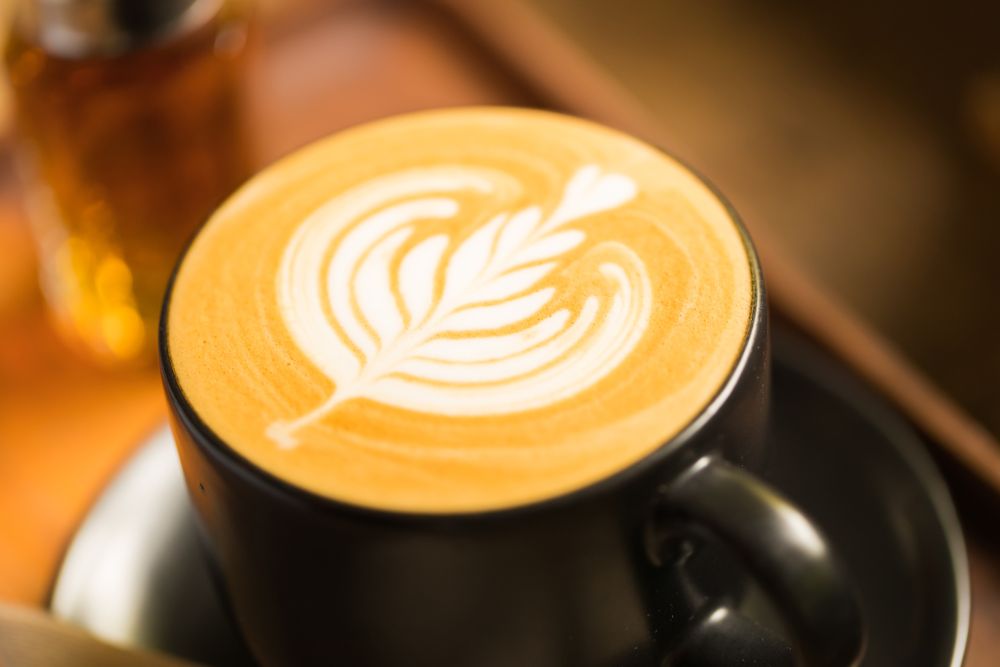
Today’s article gives you a little taste of the history and secrets of latte. We also take you behind the scenes, so you learn how to make it like a pro. Ready for some coffeelicious inspo?
What Makes Latte So Special?
In case you are more conservative, the odd names found in the coffee shop menu may not appeal to you too much. And if you are a bit too shy or embarrassed to ask the barista what a latte is, let us help.
A latte (also known as caffe latte) is a hot caffeinated drink made of espresso and steamed milk. The proportions of the ingredients are what give its unique consistency and taste. Of course, there are many espresso-based drinks that also contain milk. But the latte stands out through its creamy, smooth, and not too bitter taste.
The blend of 1/3 espresso and 2/3 milk turns the latte into an easy-to-drink beverage. Especially for those with a sensitive stomach, a black coffee may be too rough or acidic. Instead, a latte gives you the flavor of caffeine, balanced with frothy milk.
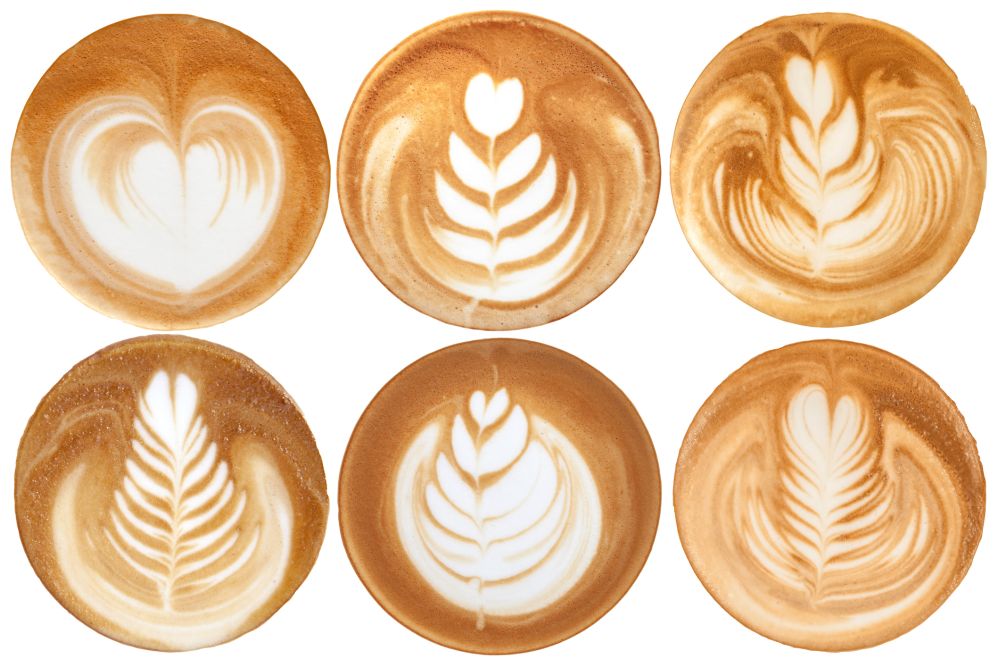
Plus, the latest trends allow plenty of creativity in preparing and serving it. From the latte art, taking decorative patterns to a new level, to extra flavors, it all gets better and better. Caramel syrup, pumpkin flavor, cinnamon, and many others can make their way into your cup.
Versatility also manifests in the ingredients. More coffee shops offer vegan versions of the caffe latte. Whether you have lactose intolerance or just want to go full-vegan, soy milk is a great substitute. Also, different types of tea (matcha, green tea, rooibos) can steal the spotlight from coffee. It is all a matter of personal taste.
A Sip Of Latte History
While the aesthetic of a caffe latte is more of modern concern, its recipe has a pretty long history. Traced back to the 17th century, a coffee and milk beverage was rather common among Europeans.
As proof, language and households keep track of this mix in various countries still. From the German milchkaffee to the French café au lait and further, milk and coffee have been a great match.
And talking about languages, you might have guessed that the word “latte” has Italian roots. The original term “caffè e latte” means coffee and milk. In English, it was first used in 1867 in the essay “Italian Journeys” by William Dean Howells. The abbreviated form “latte” is more modern and more common in the US. However, if you go to Italy and ask for a latte, you will still receive just a cup of milk.
At the beginning, the blend between coffee and milk was rather dull. But with the invention of the espresso machine, things changed. While the base of the caffe latte came from Italy, the commercial version of it was most likely born in the USA. In the late 1980s, baristas from Seattle began using steamed milk for decorations too. Creating aesthetic models to top drinks, they revolutionized how caffeinated drinks get served.
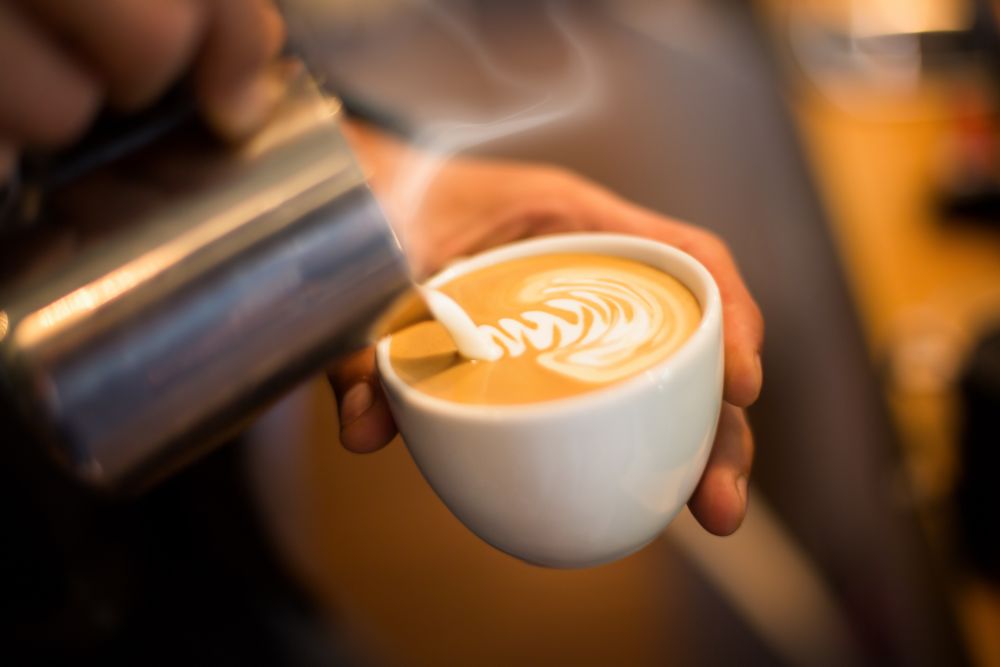
The evolution of social media also gave a huge boost in popularity for latte art. It has now become a common practice to finish a steamed milk drink with an intricate pattern. With almost nine million uses of the hashtag #latteart, we can be certain that latte is here to stay and develop. One can only try to guess what will be the next chapter in the history of caffe latte.
How To Make A Latte?
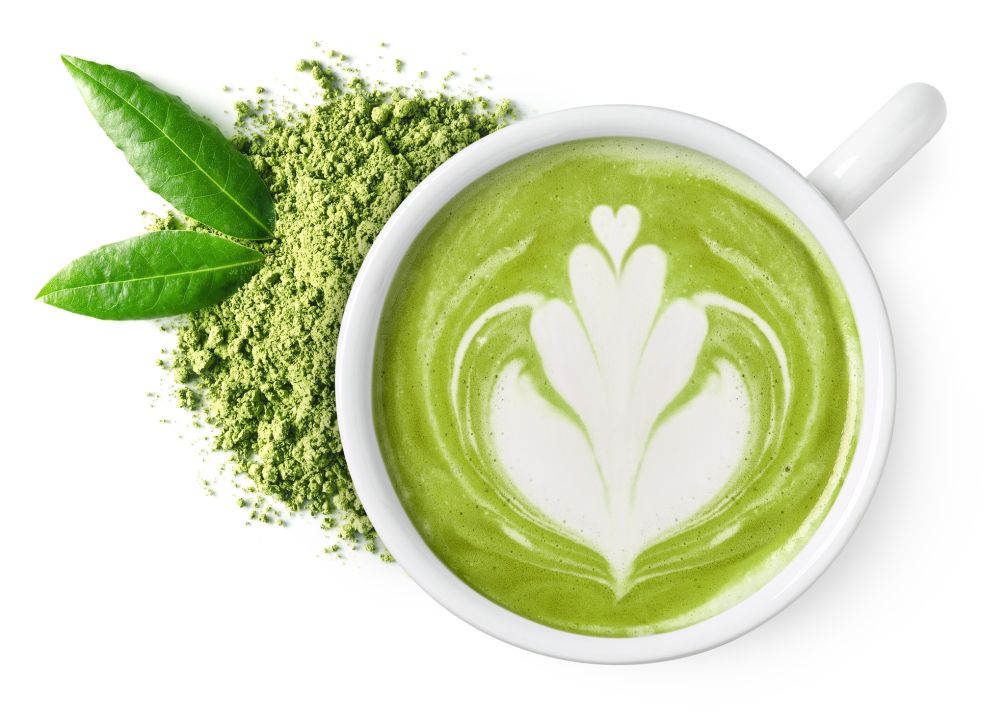
All this talk about latte might activate your taste buds. If you are craving a cup of milky bliss, the obvious next step is to learn how to make one.
Things are somewhat easier if you have an espresso machine at home, as this allows you to prepare it all faster. You can pull the espresso and steam the milk using the pressurized machine in no time. But in case you are indecisive about investing in one, for now, we have good news. You can learn how to make a latte without an espresso machine too.
Once you are ready to take your barista game to the next level, start by gathering the ingredients. To make yourself a yummy cup of latte, you will need:
- a freshly brewed single or double shot of espresso (30-60ml)
- around 250 ml of milk of your preference (regular, soy milk, almond milk, etc.)
- any flavored syrup (depending on your personal taste)
- a milk frother
- a large cup/ milk pitcher
- your favorite latte mug/ glass.
The base of any latte is the shot of espresso. So, the first step will be to prepare your single/double espresso. You can adjust the quantity, depending on how you like to drink your latte.
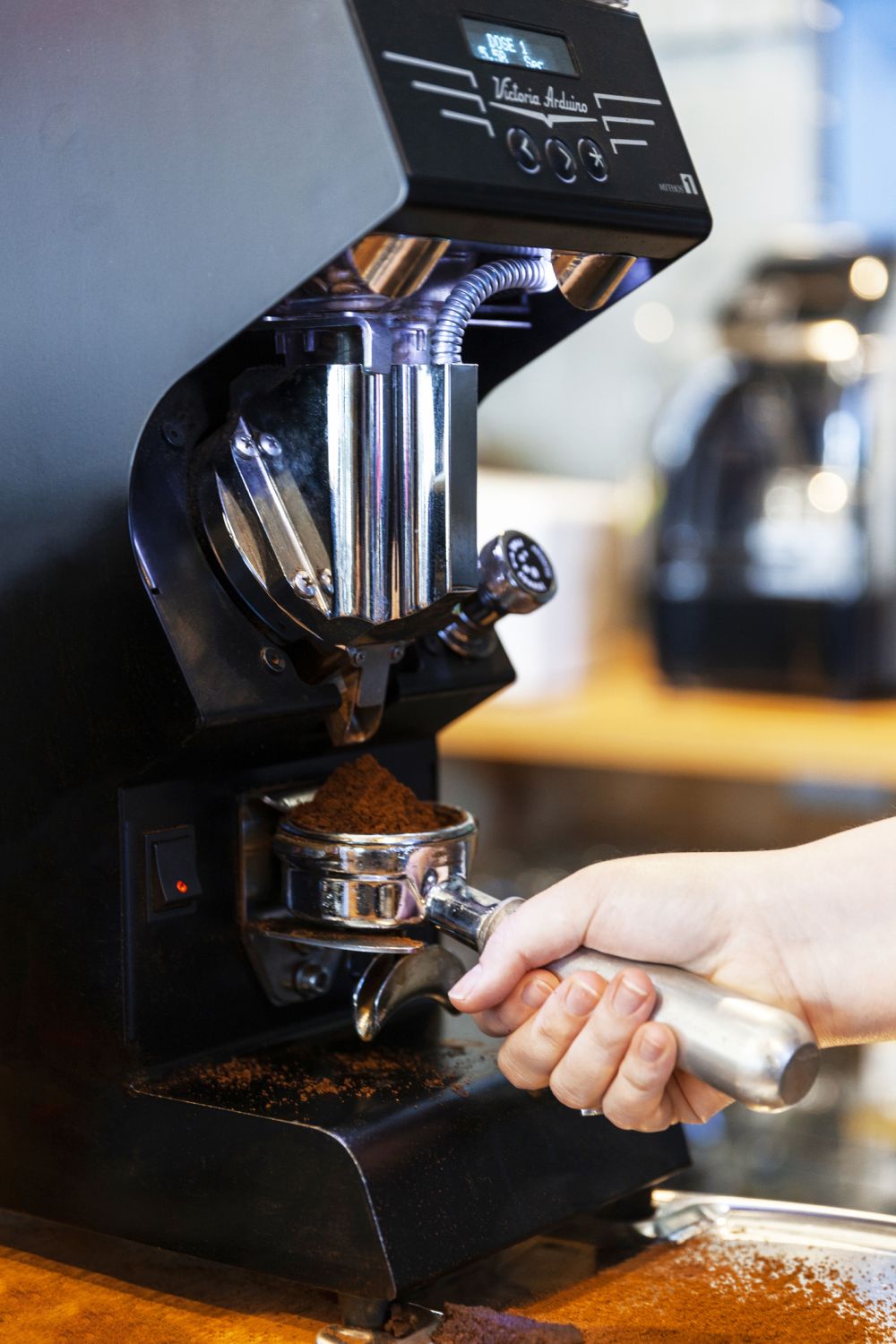
Once you pull your creamy espresso, add the extra flavored syrups you want. From pumpkin to caramel, choose what makes your taste buds happy.
Start preparing the milk right away. Put it in a milk pitcher or any tall cup and begin foaming with the steam wand. Try to keep the tip of the wand closer to the sides and move it up and down. The more movement of air through the milk, the easier it is to create the foam.
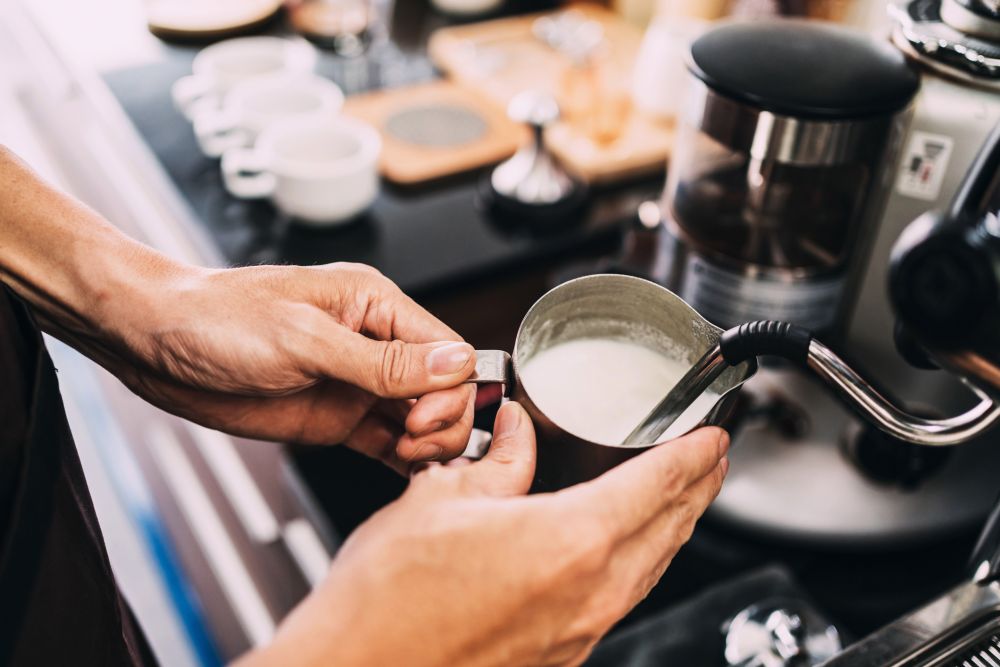
Turn off and remove the steam wand once the milk has doubled its size with foam. You are now ready to start assembling your caffe latte.
Begin pouring the milk steadily on top of the espresso and syrup. Use a spoon if you want to retain the bubbles formed on the surface of the milk for later. As the cup gets filled, bring the milk container closer to the surface of the drink while you pour it into the center. Add the foamy milk bubbles left on top with a spoon and sprinkle some cinnamon or cocoa.
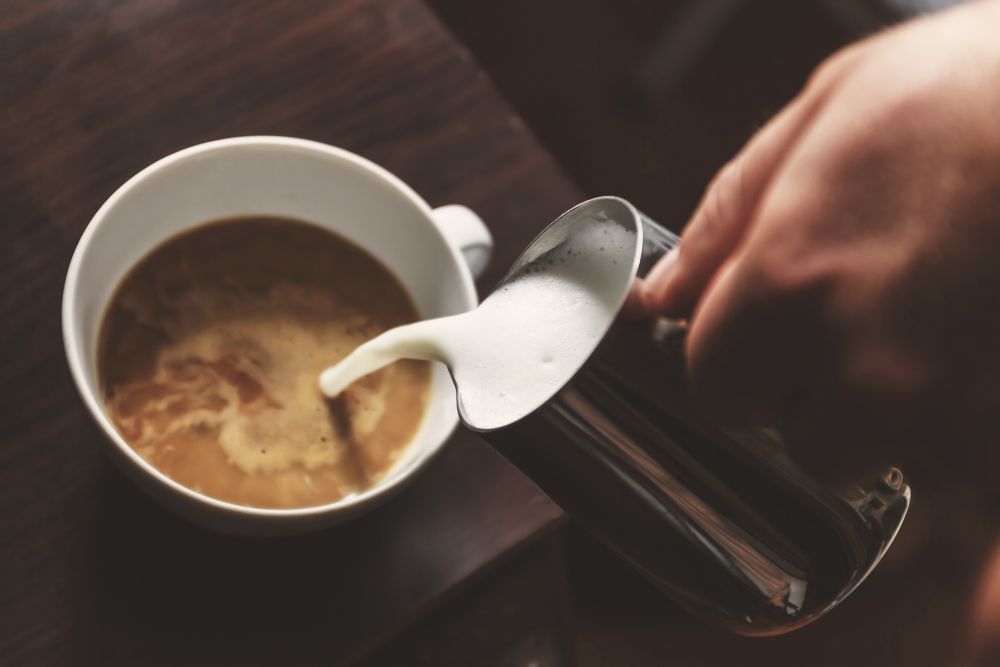
If you want to create an aesthetic pattern on top of your delicious mix, get ready to practice several times. Beautiful designs always add a dash of extra charm to a cup of latte, but it takes time to master the process. You need to keep the cup slightly inclined and remember to keep rotating the milk jug. Fortunately, many expert baristas share some of their secrets nowadays. So you can learn how to create a leaf, a heart, or even more intricate latte art patterns with steamed milk.
Latte Alternatives
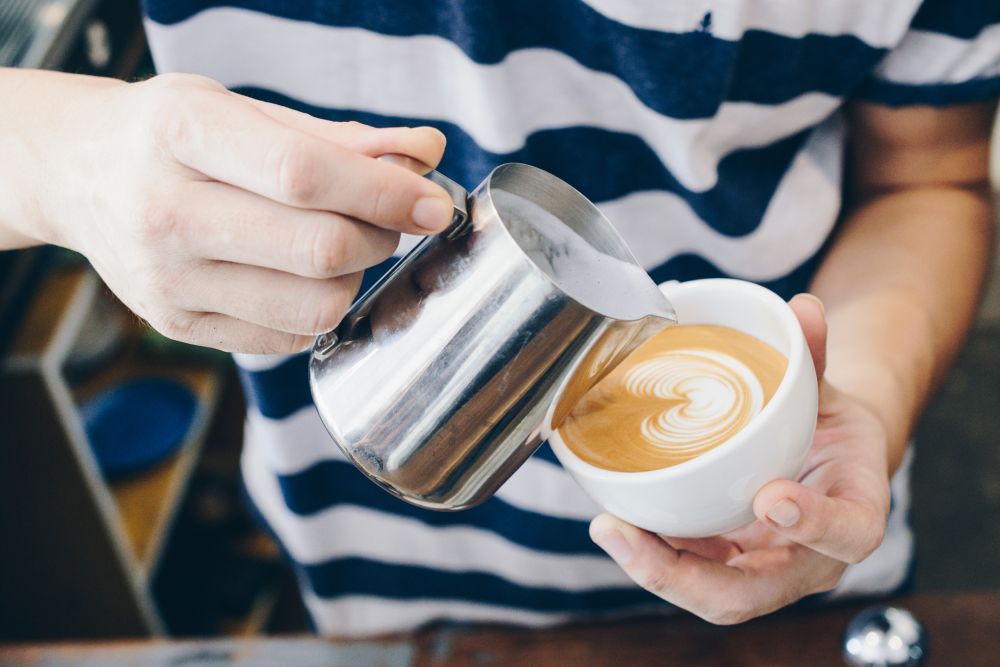
The world of coffee and derived drinks has seen so many changes in the last decades that the future is a mystery. What started as a simple, black cup of java presents itself to the public nowadays in so many sortiments. It is enough to open the menu of a coffee shop, and you will understand what we mean.
Now, as we talked about caffe latte, we found it important to bring to your attention some of its variations. Below is a list of the most popular alternatives from the original recipe.
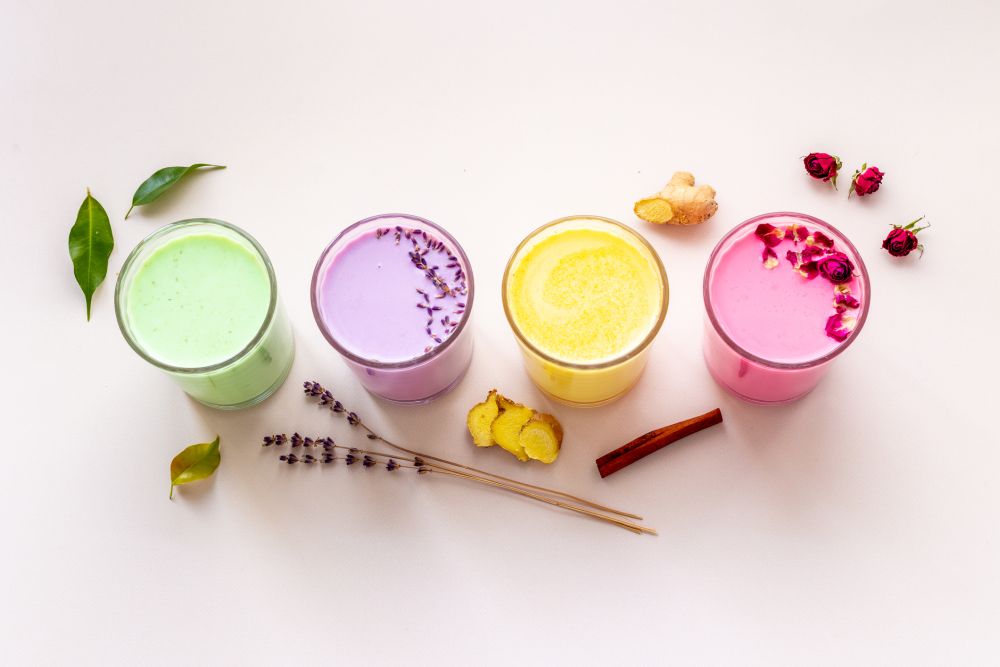
Sweet it up a notch
Vanilla, caramel, lavender even. You can incorporate any of these flavors in your latte and enjoy the holiday vibes in a cup. Pumpkin is one of the aromas that are super-popular in any season too. Which one would you pick?
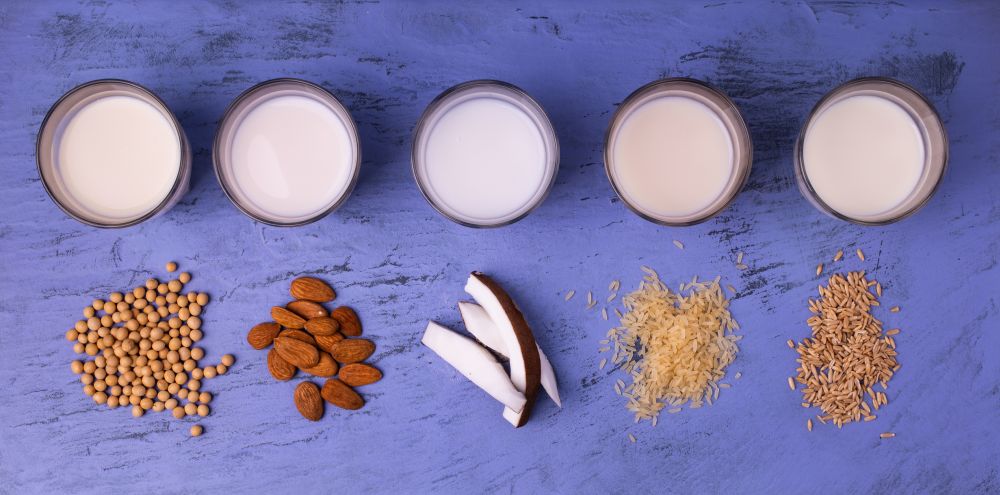
Go vegan
If you have an intolerance to lactose, using plant-based milk for your latte is a heaven-sent option. Soy milk behaves pretty well to frothing, but almond or coconut milk can work too.
Diet-friendly
You can enjoy the skimmed version of a latte with fewer calories. Sugar-free syrups and sweeteners save your waist without losing the taste.
Ice, ice…latte
Summer heat definitely gets more bearable when you can replace a hot coffee with an iced drink. Get the best of both worlds with a refreshing caffeine boost in the form of an iced latte.
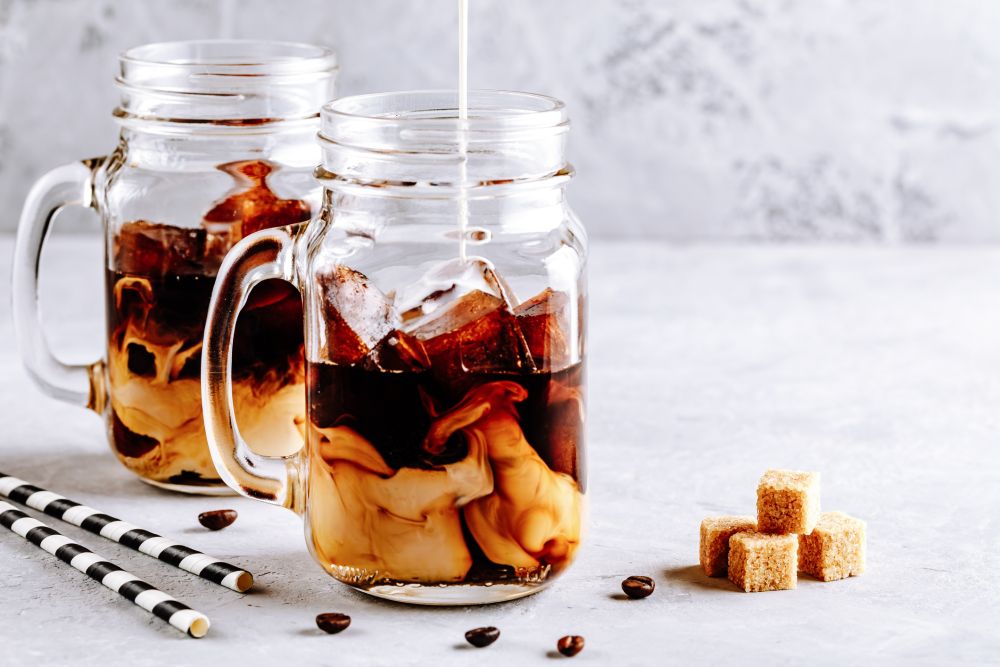
Love Tea a Latte
Whether your body does not tolerate caffeine too much or you just do not like the taste, tea is always an option. And even a tea-based latte is nowadays easy to find in a coffee shop menu. Tea latte is usually made with masala chai, matcha green tea, or Earl Grey. Of course, you can experiment with any type of tea you prefer.
A good story deserves a delicious drink. And a good storyteller sometimes needs a caffeine boost. So take a spoonful of creativity, sugar, and your favorite spice. Combine it with frothy milk and creamy espresso. And the result, ladies and gentlemen, is the caffe latte. It will delight your senses, from taste buds to eyes. Now, tell us, which flavor do you love a latte?
Leave a Reply